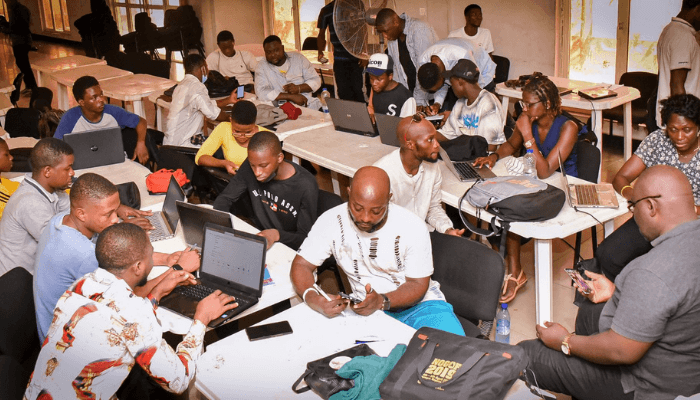AWS Launches Kiro, A Specification-Driven Agentic IDE


Code
PixabayAmazon Web Services has launched Kiro, a specification-driven integrated development environment that targets the growing market for agentic coding tools. The announcement marks AWS’s entry into the competitive AI-powered development space, positioning itself against established players like Cursor and Windsurf while addressing enterprise concerns about moving from rapid prototyping to production-ready systems.
The timing of Kiro’s release aligns with the explosive growth of what industry leaders term “vibe coding”, a practice of using natural language prompts to generate functional applications quickly. This approach has gained traction as developers embrace tools that can translate conversational instructions into working code, but enterprises remain cautious about adopting workflows that lack structure and documentation.
Kiro addresses this tension by introducing what AWS calls “spec coding,” a methodology that preserves the intuitive nature of AI-assisted development while adding the rigor enterprises demand. The platform transforms single prompts into structured specifications, technical designs, and implementation plans with comprehensive testing requirements.
The core innovation lies in Kiro’s two-tier architecture: specifications that provide structured development guidance and hooks that automate quality assurance tasks. When developers input a prompt like “Add a review system for products,” Kiro generates detailed user stories with acceptance criteria, technical design documents including data flow diagrams and API endpoints, and sequenced implementation tasks with testing requirements.
Kiro’s technical foundation builds on Code OSS, the open-source base of Visual Studio Code, ensuring compatibility with existing developer workflows. The platform integrates Claude Sonnet 4.0 and 3.7 models as its primary AI engines, with plans to support additional models.
The specification-driven development process operates in three phases: requirement unpacking, technical design generation, and task implementation. Each phase maintains traceability between high-level requirements and implementation details, addressing a common criticism of existing agentic tools that generate code without clear documentation of design decisions.
The IDE’s hook system provides event-driven automation that triggers when developers save, create, or modify files. These hooks can update test files, refresh documentation, or perform security scans automatically. This automation layer addresses enterprise concerns about maintaining code quality and security standards in AI-generated code.
Kiro represents a departure from AWS’s traditional strategy of tightly coupling developer tools with its cloud services. Unlike Amazon Q Developer, which integrates closely with AWS infrastructure, Kiro operates as a standalone, cloud-agnostic platform that supports multiple environments.
The pricing model reflects this strategic shift. Kiro will offer a free tier with 50 agentic interactions per month, a Pro tier at $19 per month with 1,000 interactions, and a Pro+ tier at $39 per month with 3,000 interactions. This usage-based pricing contrasts with the unlimited models offered by some competitors but aligns with enterprise preferences for predictable costs.
Enterprise adoption of AI coding tools faces several structural challenges that Kiro must address. Organizations struggle with tool proliferation, as the rapid pace of AI development creates choice paralysis among development teams. The lack of predefined workflows for AI-assisted development compounds this problem, as enterprise developers expect structured processes similar to traditional software development methodologies.
Security and compliance concerns present additional barriers. While Kiro includes security scanning capabilities through its hook system, enterprises require comprehensive governance frameworks for AI-generated code. The platform’s approach of maintaining specifications alongside code may help address these concerns by providing audit trails for development decisions.
Kiro’s introduction signals a maturation of the agentic IDE market, moving beyond simple code generation toward comprehensive development environments. The specification-driven approach acknowledges that sustainable software development requires more than rapid prototyping—it demands documentation, testing, and maintenance considerations from the outset.
The platform’s emphasis on maintaining synchronization between specifications and code addresses a fundamental challenge in software development: the tendency for documentation to become outdated as implementations evolve. By making specifications executable and keeping them synchronized with code changes, Kiro attempts to solve this persistent problem.
The success of Kiro will likely depend on its ability to demonstrate clear advantages over existing tools while addressing enterprise concerns about governance and quality. Early adoption patterns will indicate whether the specification-driven approach resonates with development teams seeking to balance AI assistance with professional development practices.
As the agentic IDE market continues to evolve, Kiro’s launch represents AWS’s commitment to remaining competitive in the rapidly changing landscape of AI-assisted development. The platform’s emphasis on structure and documentation may prove crucial as enterprises seek to adopt AI tools while maintaining the rigor required for production systems.
You may also like...
WWE Legends Shaken by Bizarre Death Rumors and Crash Claims

Vince McMahon was involved in a serious three-car crash in Connecticut, a collision that coincidentally occurred around ...
Luke Littler's Explosive Personal Struggles and Shock Retirement Talk

Luke Littler secured his first World Series title of the year at the Australian Darts Masters, defeating Mike De Decker ...
Weapons Film Sparks Debate: Josh Brolin Calls it a Bold Antidote to 'Boring' Streaming Content!

Explore three diverse films: "Weapons," a chilling horror-thriller about mysterious disappearances; "Freakier Friday," a...
Naked Gun Remake Ignites Screen: Liam Neeson & Pamela Anderson's Explosive Chemistry Steals the Show!

This article delves into a trio of recent film releases, including Liam Neeson's surprising comedic turn in "The Naked G...
Ozzy's Eternal Legacy: Prince of Darkness Trademark & Family's Heartfelt Goodbye

Heavy metal icon Ozzy Osbourne, the 'Prince of Darkness,' passed away on July 22, just weeks after filing to trademark h...
Oasis Wembley Gig Chaos: Security Breach & Star Sightings

Oasis' reunion concerts at Wembley Stadium were a mix of celebrity attendance, a fan's tragic death, and a major securit...
Comedian Pete Davidson's Dream Comes True: Expecting Baby with Elsie Hewitt

Comedian Pete Davidson and model Elsie Hewitt are expecting their first child, a joyful announcement made by Hewitt on I...
Big Brother Naija 10 Rocked by First Shocking Eviction

The first eviction night of Big Brother Naija 10/10 brought intense suspense and saw host Ebuka Obi-Uchendu debut an out...

